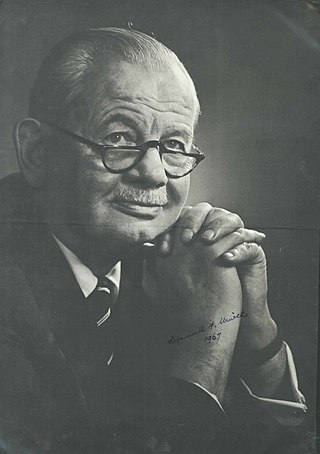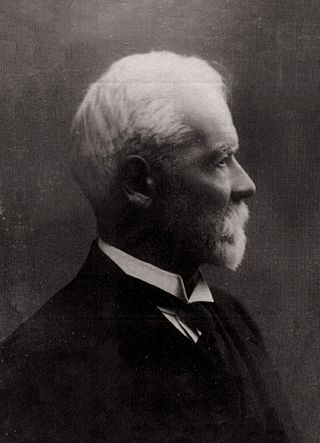Management is the administration of organizations, whether they are a business, a nonprofit organization, or a government body through business administration, nonprofit management, or the political science sub-field of public administration respectively. It is the science of managing the resources of businesses, governments, and other organizations.
Business administration, also known as business management, is the administration of a commercial enterprise. It includes all aspects of overseeing and supervising the business operations of an organization. From the point of view of management and leadership, it also covers fields that include office building administration, accounting, finance, designing, development, quality assurance, data analysis, sales, project management, information-technology management, research and development, marketing and communication studies.
Delegation is the process of distributing and entrusting work to another person. In management or leadership within an organisation, it involves a manager aiming to efficiently distribute work, decision-making and responsibility to subordinate workers in an organization. Delegation may result in creation of an accountable chain of authority where authority and responsibility moves down in an organisational structure. Inefficient delegation may lead to micromanagement.
Management by objectives (MBO), also known as management by planning (MBP), was first popularized by Peter Drucker in his 1954 book The Practice of Management. Management by objectives is the process of defining specific objectives within an organization that management can convey to organization members, then deciding how to achieve each objective in sequence. This process allows managers to take work that needs to be done one step at a time to allow for a calm, yet productive work environment. In this system of management, individual goals are synchronized with the goals of the organization.

Organizational theory refers to a series of interrelated concepts that involve the sociological study of the structures and operations of formal social organizations. Organizational theory also seeks to explain how interrelated units of organization either connect or do not connect with each other. Organizational theory also concerns understanding how groups of individuals behave, which may differ from the behavior of an individual. The behavior organizational theory often focuses on is goal-directed. Organizational theory covers both intra-organizational and inter-organizational fields of study.
An organizational structure defines how activities such as task allocation, coordination, and supervision are directed toward the achievement of organizational aims.

Theory X and Theory Y are theories of human work motivation and management. They were created by Douglas McGregor while he was working at the MIT Sloan School of Management in the 1950s, and developed further in the 1960s. McGregor's work was rooted in motivation theory alongside the works of Abraham Maslow, who created the hierarchy of needs. The two theories proposed by McGregor describe contrasting models of workforce motivation applied by managers in human resource management, organizational behavior, organizational communication and organizational development. Theory X explains the importance of heightened supervision, external rewards, and penalties, while Theory Y highlights the motivating role of job satisfaction and encourages workers to approach tasks without direct supervision. Management use of Theory X and Theory Y can affect employee motivation and productivity in different ways, and managers may choose to implement strategies from both theories into their practices.
Organizational behavior or organisational behaviour is the: "study of human behavior in organizational settings, the interface between human behavior and the organization, and the organization itself". Organizational behavioral research can be categorized in at least three ways:

Lyndall Fownes Urwick was a British management consultant and business thinker. He is recognised for integrating the ideas of earlier theorists like Henri Fayol into a comprehensive theory of management administration. He wrote an influential book called The Elements of Business Administration, published in 1943. With Luther Gulick, he founded the academic journal Administrative Science Quarterly.
Organizing or organising is the establishment of effective authority-relationships among selected works, persons and workplaces in order for a group to work together efficiently, or the process of dividing work into sections and departments, which often improves efficiency.
Management consists of the planning, prioritizing, and organizing work efforts to accomplish objectives within a business organization. A management style is the particular way managers go about accomplishing these objectives. It encompasses the way they make decisions, how they plan and organize work, and how they exercise authority.
Elliott Jaques was a Canadian psychoanalyst, social scientist and management consultant known as the originator of concepts such as corporate culture, midlife crisis, fair pay, maturation curves, time span of discretion and requisite organization, as a total system of managerial organization.
The leader–member exchange (LMX) theory is a relationship-based approach to leadership that focuses on the two-way (dyadic) relationship between leaders and followers.
Control is a function of management that helps to check errors and take corrective actions. This is done to minimize deviation from standards and ensure that the stated goals of the organization are achieved in a desired manner.
Organizational conflict, or workplace conflict, is a state of discord caused by the actual or perceived opposition of needs, values and interests between people working together. Conflict takes many forms in organizations. There is the inevitable clash between formal authority and power and those individuals and groups affected. There are disputes over how revenues should be divided, how the work should be done, and how long and hard people should work. There are jurisdictional disagreements among individuals, departments, and between unions and management. There are subtler forms of conflict involving rivalries, jealousies, personality clashes, role definitions, and struggles for power and favor. There is also conflict within individuals – between competing needs and demands – to which individuals respond in different ways.

Henri Fayol was a French mining engineer, mining executive, author and director of mines who developed a general theory of business administration that is often called Fayolism. He and his colleagues developed this theory independently of scientific management but roughly contemporaneously. Like his contemporary Frederick Winslow Taylor, he is widely acknowledged as a founder of modern management methods.
POSDCORB is an acronym widely used in the field of management and public administration that reflects the classic view of organizational theory. It appeared most prominently in a 1937 paper by Luther Gulick. However, he first presented the concept in 1935. Initially, POSDCORB was envisioned in an effort to develop public service professionals. In Gulick's own words, the elements are as follows: Planning, Organizing, Staffing, Directing, Co-Ordinating, Reporting and Budgeting.
William James Reddin also known as Bill Reddin was a British-born management behavioralist, theorist, writer, and consultant. His published works examined and explained how managers in profit and non-profit organizations behaved under certain situations and conditions. The focus of his work was to understand to what extent managers were effective in their role and successful in managing situations to have the right impact on the organization's objectives.
Likert's management systems are management styles developed by Rensis Likert in the 1960s. He outlined four systems of management to describe the relationship, involvement, and roles of managers and subordinates in industrial settings. He based the systems on studies of highly productive supervisors and their team members of an American Insurance Company. Later, he and Jane G. Likert revised the systems to apply to educational settings. They initially intended to spell out the roles of principals, students, and teachers; eventually others such as superintendents, administrators, and parents were included. The management systems, established by Likert, include "Exploitative Authoritative, Benevolent Authoritative, Consultative, and Participative ."

Fayolism was a theory of management that analyzed and synthesized the role of management in organizations, developed around 1900 by the French manager and management theorist Henri Fayol (1841–1925). It was through Fayol's work as a philosopher of administration that he contributed most widely to the theory and practice of organizational management.






